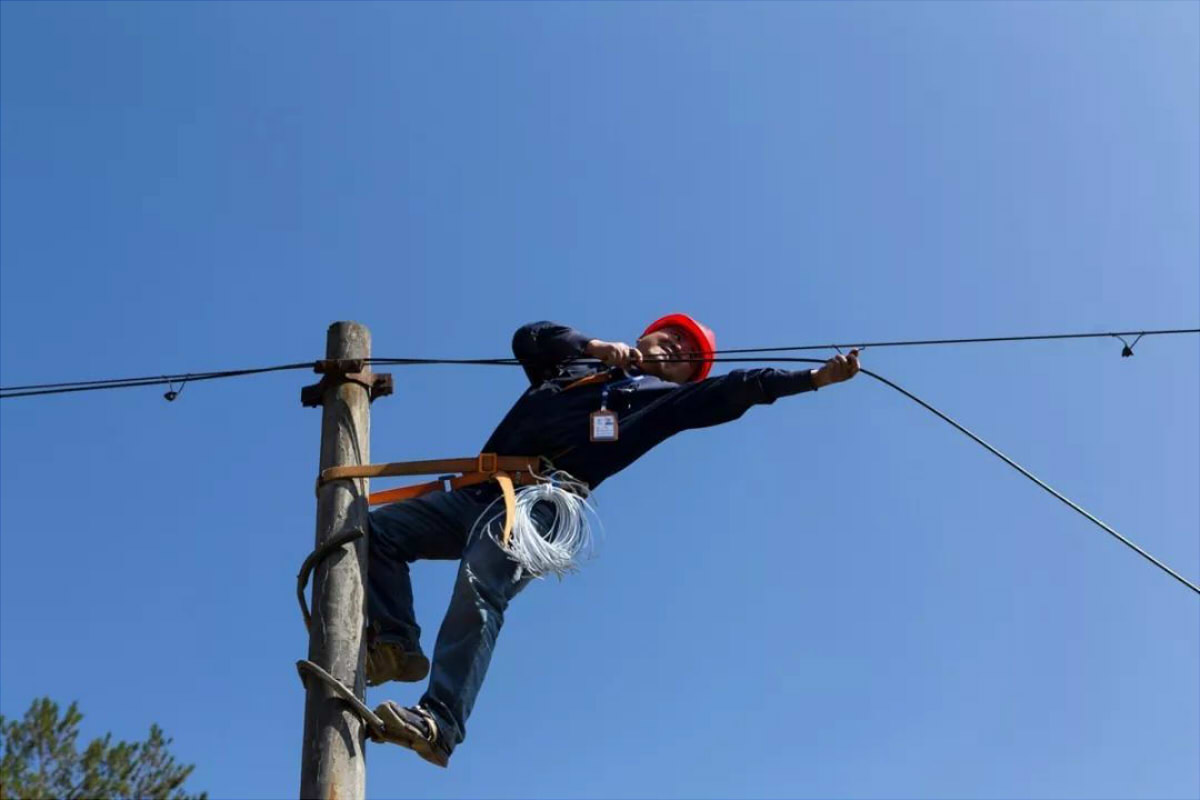There are two main types of aerial fiber optics: fibers supported by braided and self-supporting steel. For example, OPGW cables have an outer layer of aluminum clad steel wire, while the ADSS cables are self-supporting optical fibers. The laying of these two types of fiber optics is also different..
Usually, steel supported optical fibers should be suspended from poles by hanging wires. Self-supporting fiber optic cables can be installed independently in the power line.
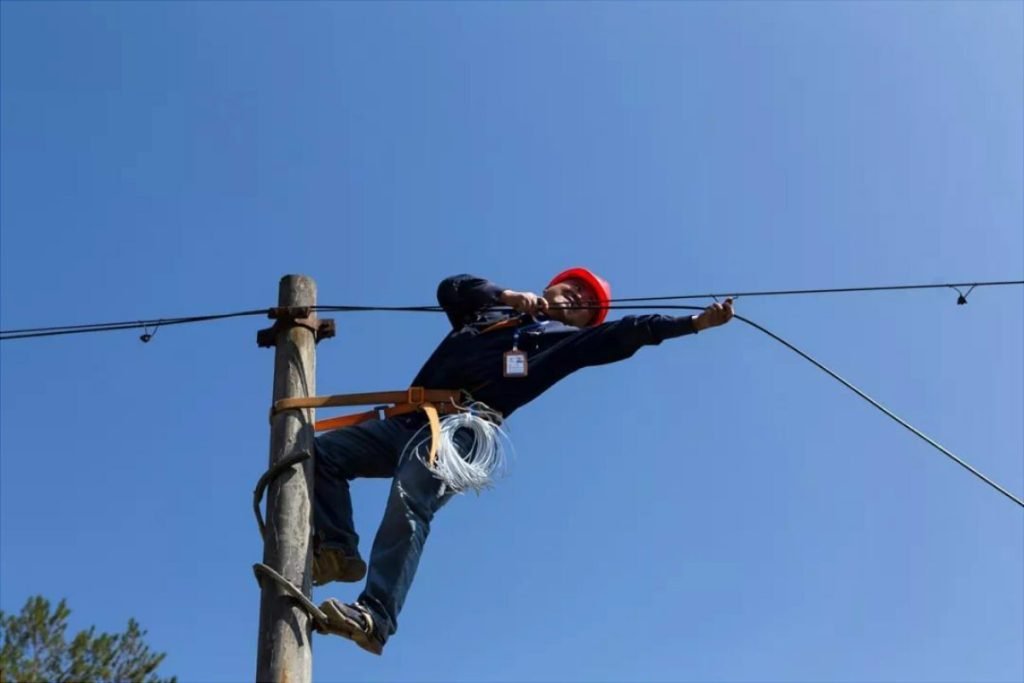
Temperature Requirements for Aerial Fiber Optic Laying
Optical fibers for aerial laying are exposed to the external natural environment for a long time. They are susceptible to signal degradation caused by ambient temperatures. Therefore, when laying aerial fibers in cold areas, attention should be paid to the temperature characteristics of the selected cable. Areas with a minimum temperature below -30 °C are not suitable for aerial placement.
Poles for Aerial Fiber Laying
The laying of overhead lines requires a certain mechanical resistance of the poles.. They must comply with overhead line construction standards Communication. The distance between posts should be 35 a 40 m in urban areas and 40 a 50 m in suburban areas.
The distance between poles in the field must vary depending on the area of weather load. But it must not be less than 25 m is superior a 67 m. If the fiber optic is installed over an existing aerial cable, no additional poles needed.
Aerial Fiber Optic Hanging Wire
Fiber optic hanger wire should generally be galvanized steel stranded wire 7/2.2. The safety factor of the wire must not be less than 3. If the fiber optic trunk line is laid in the heavy load area, you can reduce the distance between posts or use galvanized steel wire 7/2.6.
Drop wires and fiber optics must be well grounded, protected against electricity and lightning. They must also be mechanically resistant to impacts and wind.. The horizontal and vertical distance between the hanging wire and the overhead power line must be greater than 2 m. The minimum distance from the ground is 5 m and the minimum distance from the top is 1,5 m.
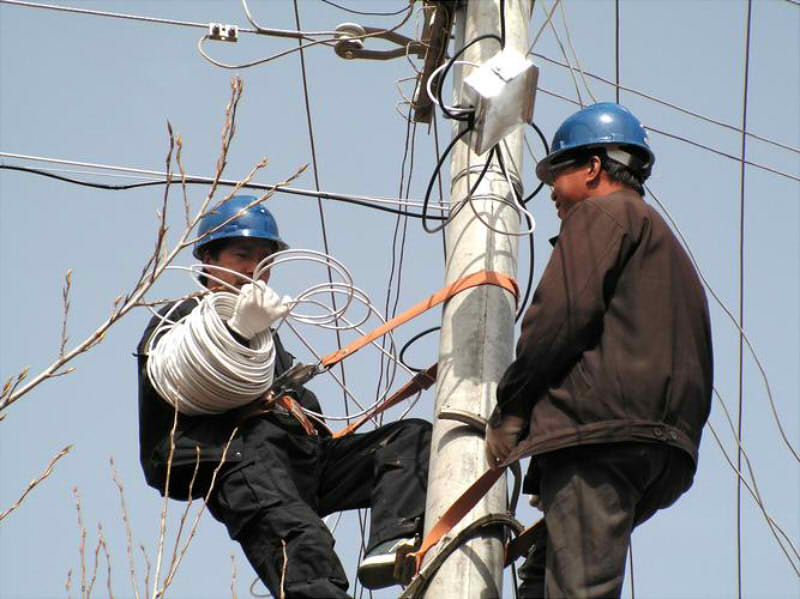
Usually, only one fiber optic cable can be hung from a hanging wire. If the overhead hanger wire is detected to be twisted, loose and other parts that are detrimental to the mechanical resistance of the wire, will need to be cut and reattached.
When they hang the wire, a single slotted cleat should be attached to the side of the post with a punch nail. And then the hanging wire is fixed in the groove of the plywood. The installation position of the plywood on the post shall conform to the design requirements.. If there are no design requirements, the following provisions must be met.
- The distance between the plywood and the top of the post should not be less than 50 cm. In special cases it can be shortened a bit, but not less than 25 cm.
- The plywood should be installed at a point not lower than 45 cm below the end line stretcher and must meet the height requirements from the ground.
- The location of the hanging wire plywood must meet the distance requirements between the fiber optic cable and other buildings.
- The plywood groove must be above the through-nails. When laying the steel braided wires, the spool is placed at one end of the post's path. Next, the wire is drawn by hand or mechanically.
Fiber Optic Aerial Placement Methods
There are currently two laying methods fiber optic aerial. One is the fixed pulley traction method., including manual traction and mechanical traction method. The other is the movable release method for fiber optic cable trays..
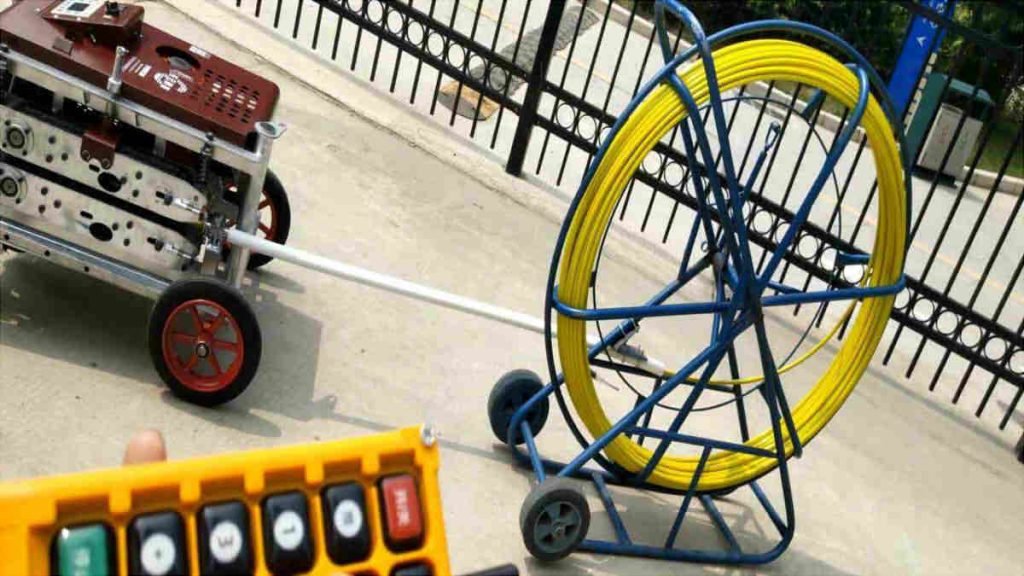
Fixed Pulley Traction Method
First, prepare the cable tray to be laid and fix the large pulley to lay the cable on the pole. A small pulley is hung (guide pulley) each 10-20 m on the hanging wire of each pole. And thread the pull rope into the small pulley.
Next, the pulling head is fabricated and the pulling rope is connected to the fiber optic cable. When manual traction is used, the fiber optic cable is gradually released by manually pushing the cable tray. Next, send one person to every other pole for auxiliary traction. If required, guide pulley is installed. At the pulling end, the pull rope is gradually tightened so that the optical fiber is slowly released.
When mechanical traction is used, the mechanical traction machine should be placed at the collection end. The auxiliary traction machine should be placed in the proper position for the erection path.
Place the fiber optic tray on the release end of the cable. Manually push the optical cable to gradually release it from the top of the tray. When performing the tensile ends, it is important to ensure that the tensile force acts mainly on the reinforcement of the fiber optic cable.
Within the limits of the permissible tensile force of the optical fiber, the length of the cable to be deployed at one time will depend on the ground conditions. Besides, the speed of the optical fiber pulling machine should be determined in advance. When the tensile stress exceeds the standard, It must be able to cut off automatically or give an alarm when the pulling tension exceeds the norm.
Mobile Release Method for Cable Trays
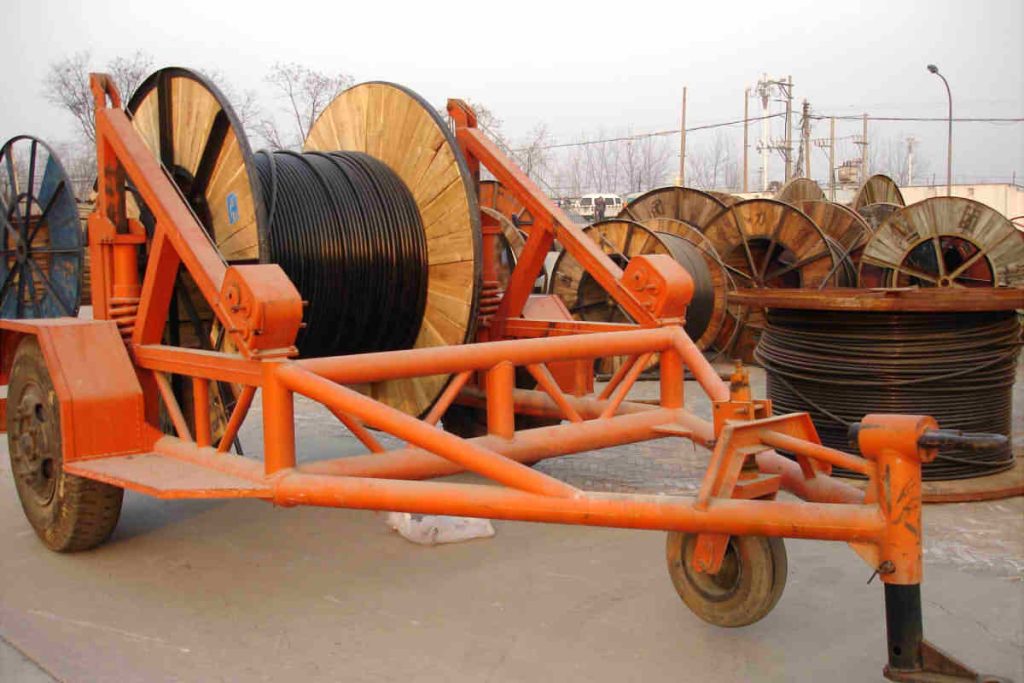
This method of overhead fiber optic laying consists of fixing one end of the fiber optic cable to the hanging wire of the pole and placing the cable tray on a truck. Manually pushing the fiber optic tray, the cable can be hung from the hanging wire along the route of the overhead pole.
This deployment method is easy to handle., but the use of trucks for assembly is limited by conditions. It is necessary that the width of the road allows the traffic of conditions. At the same time, the distance from the edge of the road for the aerial poles should not be more than 3 m. The erected section must be clear of obstacles and the hanging wire must be placed at the lowest level of the others power lines of the post office.

